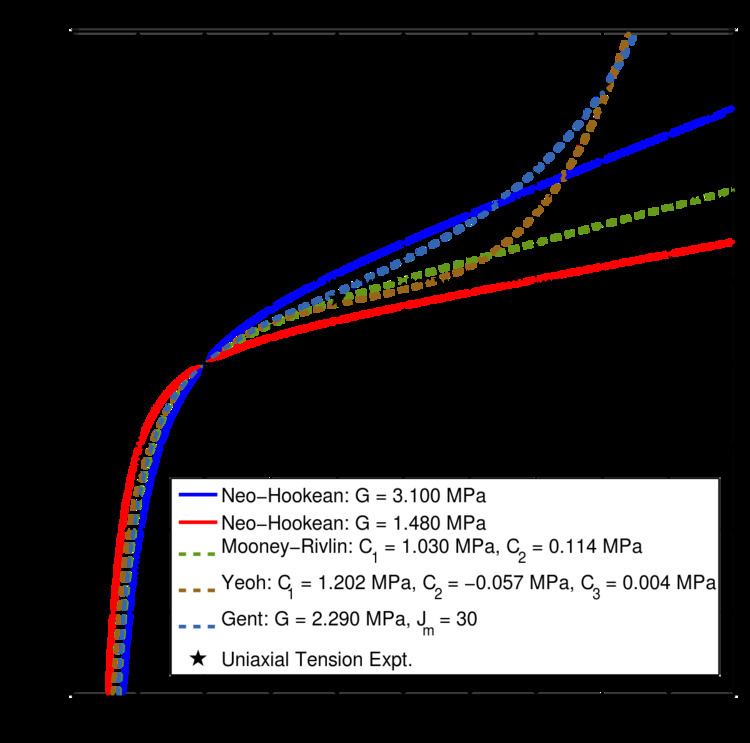 | ||
The Gent hyperelastic material model is a phenomenological model of rubber elasticity that is based on the concept of limiting chain extensibility. In this model, the strain energy density function is designed such that it has a singularity when the first invariant of the left Cauchy-Green deformation tensor reaches a limiting value
Contents
- Consistency condition
- Stress deformation relations
- Uniaxial extension
- Equibiaxial extension
- Planar extension
- Simple shear
- References
The strain energy density function for the Gent model is
where
In the limit where
A Taylor series expansion of
which is the expression for the strain energy density of a Neo-Hookean solid.
Several compressible versions of the Gent model have been designed. One such model has the form
where
Consistency condition
We may alternatively express the Gent model in the form
For the model to be consistent with linear elasticity, the following condition has to be satisfied:
where
Therefore, the consistency condition for the Gent model is
The Gent model assumes that
Stress-deformation relations
The Cauchy stress for the incompressible Gent model is given by
Uniaxial extension
For uniaxial extension in the
The left Cauchy-Green deformation tensor can then be expressed as
If the directions of the principal stretches are oriented with the coordinate basis vectors, we have
If
Therefore,
The engineering strain is
Equibiaxial extension
For equibiaxial extension in the
The left Cauchy-Green deformation tensor can then be expressed as
If the directions of the principal stretches are oriented with the coordinate basis vectors, we have
The engineering strain is
Planar extension
Planar extension tests are carried out on thin specimens which are constrained from deforming in one direction. For planar extension in the
The left Cauchy-Green deformation tensor can then be expressed as
If the directions of the principal stretches are oriented with the coordinate basis vectors, we have
The engineering strain is
Simple shear
The deformation gradient for a simple shear deformation has the form
where
In matrix form, the deformation gradient and the left Cauchy-Green deformation tensor may then be expressed as
Therefore,
and the Cauchy stress is given by
In matrix form,
